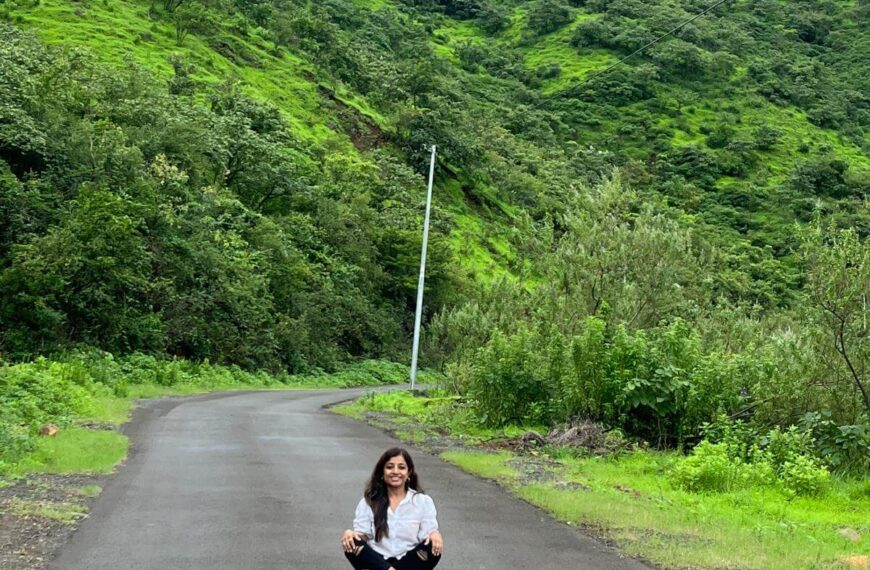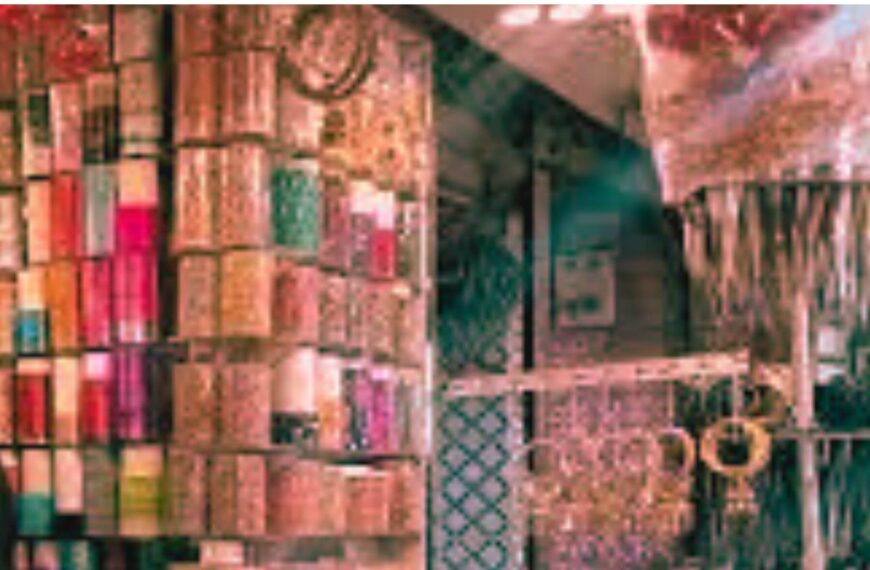In 1817, the third Anglo-Maratha war broke out between the British East India Company and the Marathas. The Peshwas were defeated in Khadkee, called Khirkee, by the British, and the city, then called Poona, was seized by the English. They built a Cantonment here, which still houses the Indian Army. The National Defence Academy is in Khadakvasla. It trains cadets to be officers. The Armed Forces Medical College is also in Pune. The salubrious climate and the serene surroundings earned Pune the reputation of a pensioners’ paradise many years ago. Well, everything changes. It has now evolved into an education hub with many prominent colleges. It gained some interest for the ashram of the controversial guru, Osho. Here’s an interesting account from Lily, in the weekly column, exclusively in Different Truths.
It was time to be up and about once again as the husband was detailed for a year-long course in Pune, a city in Maharashtra, steeped in history and a throbbing cultural and manufacturing hub. I read now that it’s the second most liveable city, according to the Mercer rankings of 2015, second only to Hyderabad. The city situated on the right bank of the Mutha River on the Deccan plateau, dates as far back as the 8thcentury, when Rashtrakuta dynasty r uled here. Excavations revealed copper plates dating to 858 AD. An agricultural settlement called Punnaka existed here those days. It had its heyday during the powerful Maratha Empire established by the brave Shivaji.
uled here. Excavations revealed copper plates dating to 858 AD. An agricultural settlement called Punnaka existed here those days. It had its heyday during the powerful Maratha Empire established by the brave Shivaji.
Pune was the hotbed of politics during the 18th century, when it became the seat of the Peshwas, who were the prime ministers of the Marathas. A tussle of 27 years took place between the Marathas and the Mughals for supremacy. During the period of 1703 to 1705 Pune was ruled by Aurangzeb and its name for that period was Muhiyabad! In 1817, the third Anglo-Maratha war broke out between the British East India Company and the Marathas. The Peshwas were defeated in Khadkee, called Khirkee, by the British, and the city, then called Poona, was seized by the English. They built a Cantonment here, which still houses the Indian Army.
The National Defence Academy is in Khadakvasla. It trains cadets to be officers. The Armed Forces Medical College is also in Pune.
The salubrious climate and the serene surroundings earned Pune the reputation of a pensioners’ paradise many years ago. Well, everything changes. It has now evolved into an education hub with many prominent colleges. It gained some interest for the ashram of the controversial guru, Osho.
We lived in an apartment complex, in Girinagar, next to the Khadakvasla Lake and not too far from the famous Singhad Fort. A mixed lot of officers from different arms congregated here for technical courses and young couples would party to the wee hours of the morning to destress on weekends. The film song Tirchhi topi waale from a popular film was doing the rounds then. All merry making ended with this number played full blast at deafening decibels. I remember with exceeding relish the echoing sound of the repetitive chorus, ‘Oye oye’ bring repeated throughout all the buildings in one lion roar, all at once. Exhilarating to say the least. I instinctively shout oye oye aloud if I happen to hear this song in passing.
My son, Gobind Shahbaaz Singh, who was just a baby then learnt to walk here in the tiny student home with the aid of a walker. He soon learnt to scamper up the huge flight of steps.
He passed away a few years ago but his memories are vivid. I learnt a smattering of Marathi from the maid, who happened to be a fisherwoman previously. Needless to say my knowledge of Marathi is fishy!
This was the first time that I saw air conditioned trucks carrying frozen chicken. Pune had the famous Venky’s Chicken. They had hatcheries where broilers were raised. They would transport the chicken to Mumbai by 3AM and it would be off to Dubai to be served in a few hours. The Venky’s had a school for their staff. My daughter was enrolled here as it was close by. She was taught well as there were very few students in a class. The healthy snack of one boiled egg each was provided to every child daily. My daughter still wrinkles up her nose at the prospect of boiled eggs after the force-feeding for an entire year.
This was definitely a nostalgic trip for my husband as the NDA was next door across the lake. He feels every individual should undergo some form of army training for a few days. In recognition of the sacrifices of Indian troops, in liberating Sudan, in World War II, the Sudanese government had given a princely sum of 100,000 pounds to Lord Linlithgow in 1941. India’s share of 70,000 pounds was used to start construction of NDA. It was formally commissioned in 1954. It’s said that 8022 acres were given by the erstwhile Bombay State. The Arabian Sea was close by and the terrain was partly hilly.
The north bank of Khadakvasla Lake had a mock landing strip for training in amphibious landings. The imposing Sudan block made with Jodhpur red sandstone has arches, pillars and Italian marble floors with panelled walls. The foyer had portraits of the brave heart, who won gallantry awards. NDA has precious war relics like captured tanks and aircraft. The Vyas Library is mind boggling.
My husband showed off the gigantic dining room where all the cadets were served together at the same time with clockwork precision. His eyes became damp as he saw the same waiter, who had served him as a cadet still waiting tables! He was touched at the vagaries of destiny. It can forget some people and move away. He hugged the waiter and shook his hand and surreptitiously left him some money. For days he walked around talking affectionately and nostalgically of the kind manner with which that particular waiter fed all the hurried and harried cadets lovingly.
Trips to MG road Pune were not complete without the scrumptious though homely chicken sandwich, cheese macaroni, and coffee at Marz-o-Rin. Yummy is an understatement. Ask the locals, who grew up eating it. Another must do is the keema pav, bun maska, chai at Goodluck Café, where the Film Institute regulars like David Dhawan ate at affordable prices.
Celebrities like Devanand walked through its door. Try the Chicken Ra Ra with rumali roti. It’s worth going to Vaishali for dahi poori, sev poori, and pav bhaji breakfast. Sabudana vadaai are drool worthy with coconut chutney. To my very North Indian palate, the concept of pearl millet and sorghum flour was unique. I enjoyed all the bhakris made with jowar and stuffed brinjals as accompaniment. The vada pava are a kind of Indian hamburger with spicy chutney laced in for good measure. The humble pressed rice and onion staple called kande pohe won me over with its delicacy.
The cadets go up the Singhad Fort and climb much like Shivaji’s troops might have gone ages ago, as a punishment. The climb is arduous but all tourists trek up anyhow. The reward at the top is a rustic chicken curry Gawti Kombdi and Zunka Bhakar, a kind of bread.
The Pune folks use a lot of Kokum in their lentils and curries to add a sour tinge to them. It’s a fruit that is used in its dried form. Onion grows in plenty and is cheap. The poorest of the poor eat it. My favourite though was a sweet bread called Pooran Poli. It is stuffed with nutmeg and cardamom flavoured black gram lentils. I could go on about the slurpy flavours of Maharashtra! Let me not by any chance forget the spicy Bhelpuri that can knock the socks off any lesser mortals tongue!
 Fun days were those when we got together with friends during the green fragrant monsoons and went to the exotic twin hill stations of Panchgani and Mahabaleshwar. It was a pleasant drive with frequent stoppages in the lush green Western Ghats for pictures and to munch on the wood roasted corn on the cob! Smoky and sweet! Panchgani had a table land of laterite rock, the second longest mountain plateau in Asia after the Tibetan plateau. Numerous songs of Hindi films have been shot here. The Pandavgad caves and Devils Kitchen are associated with the Pandavas of Mahabharata according to mythology. Twinkle Khanna, Rajesh Khanna and Dimple Kapadia’s daughter and the film director Karan Johar studied here in a boarding school. Mahabaleshwar is very picturesque with the Krishna River originating here. The climate of this town is perfect for the cultivation of strawberries. Eight
Fun days were those when we got together with friends during the green fragrant monsoons and went to the exotic twin hill stations of Panchgani and Mahabaleshwar. It was a pleasant drive with frequent stoppages in the lush green Western Ghats for pictures and to munch on the wood roasted corn on the cob! Smoky and sweet! Panchgani had a table land of laterite rock, the second longest mountain plateau in Asia after the Tibetan plateau. Numerous songs of Hindi films have been shot here. The Pandavgad caves and Devils Kitchen are associated with the Pandavas of Mahabharata according to mythology. Twinkle Khanna, Rajesh Khanna and Dimple Kapadia’s daughter and the film director Karan Johar studied here in a boarding school. Mahabaleshwar is very picturesque with the Krishna River originating here. The climate of this town is perfect for the cultivation of strawberries. Eight y-five percent of the country’s strawberries are grown in these parts. Other haunts were Lonavla and Khandala. Famous for the caves and the chikki, a hard candy with peanuts.
y-five percent of the country’s strawberries are grown in these parts. Other haunts were Lonavla and Khandala. Famous for the caves and the chikki, a hard candy with peanuts.
There are old buildings in Pune, like the Agha Khan Memorial and the Shanivarwada. To be honest, I was more interested in ferreting in the old Laxmi Road area for the traditional Maharashtrian fabrics like the overpriced Paithani sarees. A whole peacock is woven into the Pallu of this rich silk, hand-woven sari. The other thing that never ceased to fascinate me was the long nine-yard sari. The cloth was draped and tucked at the back. Nothing else was needed to support it. My giggly friends naughtily called it the bum splitter!
©Lily Swarn
Pix from Net.










 By
By

